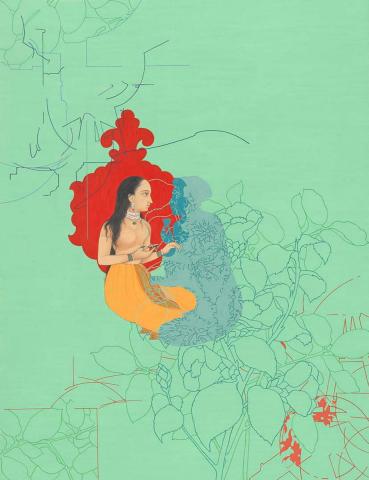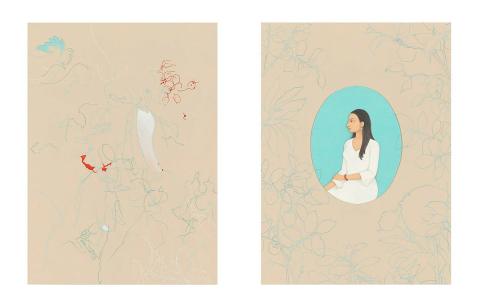Nusra Latif Qureshi's complex miniatures
Nusra Latif Qureshi was trained in Lahore, Pakistan in the formal art of miniature painting. This teaching included the disciplines of wasli (paper) and pigment preparation, as well as exercises in training the eye to see infinitesimal delineation and the hand in controlling the finest of brushes to paint extraordinary detail. Utilising this preparation Qureshi has developed a style of painting that explores the broad and rich visual histories of the region.
Qureshi appropriate fragments from iconic miniature painting, such as the figure of a Mughal emperor, and juxtaposes them with a range of other imagery. These paintings include outlined drawings of flora and fauna, derived from albums commissioned by British officials in Pakistan and India in the 1780s. A significant aspect of British colonial rule was the assiduous work of classification. The new worlds offered whole environments of plants and animals that required cataloguing. Often local artists were commissioned to paint these subjects. In contrast to the folios of the royal courts that filled the pages with details of subject, background and text, these commissioned albums were filled with superb paintings of animals and plants with no backgrounds. They floated on each page absent of context. In Qureshi’s paintings these varied images lie layered on top of each other to construct pictures that refer to a complex history that is now an indivisible part of that place.
Connected objects

Silent spaces 1 2005
- QURESHI, Nusra Latif - Creator

Backdrops II 2001
- QURESHI, Nusra Latif - Creator



